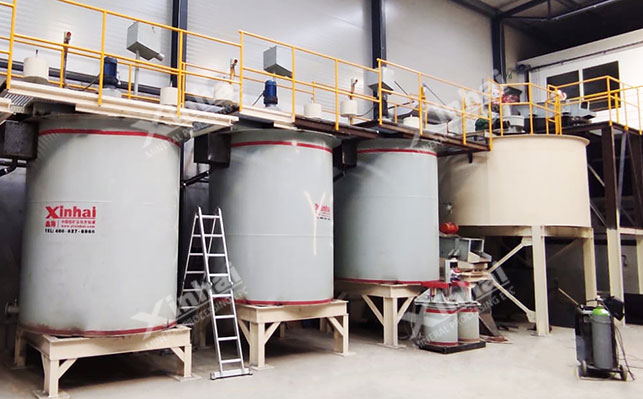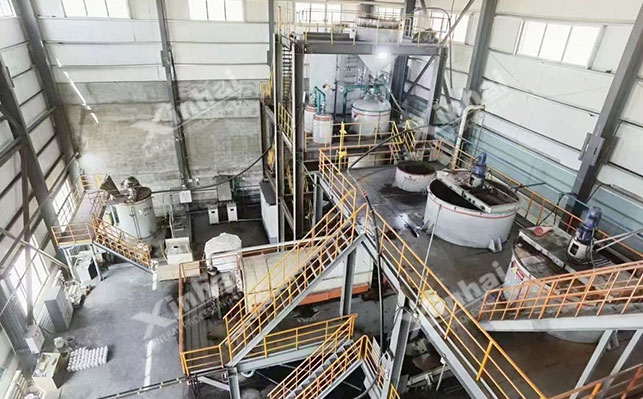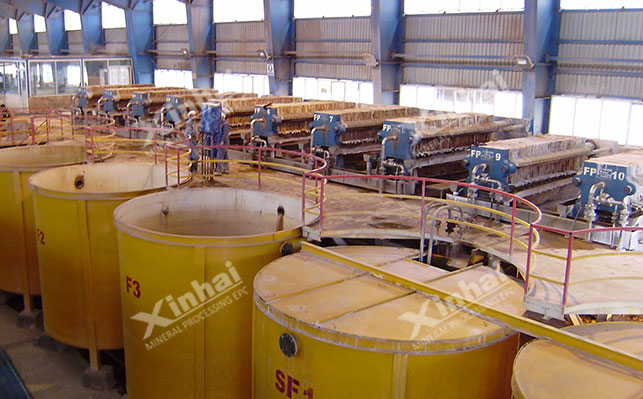
15311826613
Click to add WeChatCopper is an important strategic resource for national economic construction. With the development of the world economy, the continuous development of copper resources has gradually reduced the resources of easy-to-mine and easy-to-select primary copper sulfide ore. It is particularly important to develop and utilize the difficult-to-select copper oxide ore resources. For the difficult-to-select copper oxide ore beneficiation, leaching can be used for selection. Let's learn about the copper oxide ore leaching process and methods!
Leaching process refers to the process of adding leaching agents to the copper oxide ore after crushing or grinding, selectively dissolving copper oxide, allowing copper to enter the leaching solution in the form of ions, and then extracting copper from the leaching solution. Leaching agents can be divided into two categories according to their properties: acidic leaching agents and alkaline leaching agents. Commonly used acidic leaching agents include sulfuric acid, hydrochloric acid, nitric acid, etc., and alkaline leaching agents are mainly ammonia water, among which ammonia water and dilute sulfuric acid are commonly used leaching agents.

Acid leaching is often used to extract copper from low-grade copper oxide ore. Generally, dilute sulfuric acid is used to treat copper ore with acidic gangue as the main component. According to the different leaching efficiency, the leaching process can be roughly divided into three stages:
Stage 1: Mainly dissolve free copper oxide and copper oxide wrapped by iron minerals, and the entire leaching rate mainly depends on the leaching efficiency of this stage;
Stage 2: Mainly leaching easily soluble copper oxide, this stage is mainly chemical reaction;
Stage 3: Mainly leaching copper oxide wrapped by silicate minerals, this stage is controlled by physical and chemical effects.
In addition, according to different leaching methods, the leaching process can be divided into two methods: stirring leaching and heap leaching.

Sulfuric acid stirring leaching process:At room temperature and pressure, the particle size is 1-0mm as an example. The suitable leaching parameters are acid-to-material ratio of 1:0.4, liquid-to-solid ratio of 4:1, and leaching time of 4h. The copper leaching rate can reach more than 90%. This process has low cost, simple process, less pollution to the environment, and high copper leaching rate. It is an effective way to treat copper oxide ores with large mud content.
Sulfuric acid heap leaching process:Heap leaching is also a common method for leaching low-grade copper oxide ores. Heap leaching is widely used due to its simple process, convenient operation, and low leaching cost. Leaching efficiency depends on the permeability of the leaching agent in the ore. Concentrated sulfuric acid is often used as a leaching agent in the heap leaching process. The enhanced leaching of concentrated sulfuric acid can not only increase the permeability of the ore and solve the problem of high mud content, but also improve the leaching rate of the ore and the grade of the leachate, reduce acid consumption, and shorten the leaching cycle.
The ammonia leaching process of oxidized copper ore often uses ammonia and ammonium salts as leaching agents to dissolve the copper and its compounds in the material to form copper-ammonia complexes and enter the solution. The ammonia leaching process has many characteristics such as simple process flow, low environmental pollution, and low equipment investment. It is widely used in the leaching of high-alkaline gangue-type oxidized copper ores.

When treating high-alkaline gangue-type copper oxide ore, the acid leaching method consumes a large amount of acid and the impurity content of the leaching solution is high, while the ammonia leaching method can well avoid these problems.
Generally, the leaching rate of copper is proportional to the reaction temperature, ammonia concentration, and stirring speed, and inversely proportional to the liquid-solid ratio and mineral particle size. When the grinding fineness is -74μm, accounting for 85%, the leaching temperature is 45℃, the ammonium bicarbonate concentration is 1mol/L, the ammonia concentration is 2.5mol/L, the liquid-solid ratio is 2:1, and the stirring intensity is 400r/min, the copper leaching rate can reach 85% after leaching for 2h.
The above is an introduction to the heap leaching process of copper oxide ore and other leaching process methods. In actual ore dressing plants, copper oxide ore is a difficult-to-select copper, so the selection of its beneficiation process is particularly important. If you want to obtain an ideal copper oxide concentrate grade, it is recommended to conduct a beneficiation test. Through test analysis, a suitable copper ore beneficiation plan can be designed. At the same time, a complete set of copper ore beneficiation equipment is provided.